
Anxiety and the Energy Attitude
The Nature of Fear – A Case Study
Sophia Dunn, September 5, 2012

Perhaps there’s another way to view anxiety. Think just for a moment about what it might be like to be incapable of being anxious. How long might such a person expect to survive? And while she or he was alive, how might others perceive her or him? Right. “A human being, but not as we know it, Jim….” A person who was never anxious would seem alien—unreal to the rest of us;difficult to relate to. But perhaps others wouldn’t need to struggle with that for very long; an entirely non-anxious person would not feel the ordinary fear signals that keep the rest of us out of danger, and as a result, it wouldn’t be long before some very real danger would put an end to the non-anxious life.
From my point of view, anxiety is simply a state of (usually) low-level fear which we often notice only when it becomes problematically chronic, or even ubiquitous. And when we use the word, ‘fear,’ I believe we enter a more real and descriptive state of basic emotion. All human beings are fearful. As humans, in evolutionary terms, we must stay alive a bare minimum of twelve to fifteen years before we can begin to replicate our genes. That’s twelve to fifteen years in a relatively defenseless physical state. We don’t have claws or fangs; compared to other animals, we aren’t particularly strong; we cannot even run very fast, especially in comparison with those creatures who might make a meal of us. Our food-finding equipment is not exactly state-of-the art either. Compared to even a mouse or an insect, our sense of smell is fairly primitive; and while our eyesight is both keen and complex, we cannot see well in the dark, nor in very fine detail, nor in the ultraviolet parts of the spectrum. And still, we must stay alive for almost a decade anda half before we can reproduce.
What the human being has evolved in order to accomplish this in spite of human limitations are two remarkable developments which work together. We have a cortex—a problem-solving brain—that is added onto the sorts of brain bits that other animals have and, more importantly, that is networked into the rest. Like most other animals, we also have a tiny brain organ called the amygdala, which is responsible for the sensation of fear and the fight/flee/freeze response to it. Like the rest of the brain, the amygdala is networked into the cortex. In this way, the human being is a kind of ‘early warning system on legs.’ We are exquisitely designed to detect threat (with a sensitive and active amygdala), to evaluate the meaning and nature of the threat, and eventually (with our highly evolved cortex) to treat the threats as problems to be solved and to solve them.

So, to keep us safe, the amygdala shuts the cortex down. When we are afraid, we literally can’t think. Usually, the more afraid we are, the less we are able to use the cortex. This was fine when our main problem was being chased by hungry predators. However, in the post-modern world, most of the things which threaten us are complex and without claws or fangs. It would be helpful if we could problem-solve when faced with modern-world threats. This shutting down of our decision-making (and sometimes our perceiving) functions manifests in what we know as anxiety—an edgy, fearful state in which we feel compelled to respond but do not feel entirely ’ourselves.’ We are in a state in which we find it difficult to focus on anything but the emotion.
It can also result in a kind of meta-anxiety—an anxiety about being anxious, which forms the core of most panic attacks.
But if fear and anxiety are such a part of the normal condition for humans, can we or should we try to lessen our anxiety? Shouldn’t we just get used to it? As a therapist, should my role perhaps be to help people get used to being anxious rather than trying to ‘relieve’ something that is as natural as breathing?
Certainly,acceptance is vital in our relationship with our own anxiety because, paradoxically, acceptance is our greatest ally in learning to regulate, learn from, manage, and become respectful allies with our very necessary fear.Having said that, it’s important to draw a distinction between acceptance and indulgence. We may accept that all mentally capable children learn how to lie. But accepting this as a normal part of behavioral development is very different from indulging deceitfulness in our ourselves and our children.And it is in this role of mindful, questioning acceptance that personality type offers us some important tools in understanding, regulating, managing, and even utilizing anxiety in ourselves and others.
Can Type Help?
Since Eve Delunas published her groundbreaking work, Survival Games Personalities Play (1992), not much has been written on how psychological type relates to anxiety. Yet, of all of the issues that bring people to therapy, anxiety tops the list. As a therapist with over twenty years’ experience providing therapy across a variety of settings, seeing an average of 15-20 people a week, I know that without anxiety, I would long ago have had to find another career. Even depression (that other frequent issue) is more often than not related to anxiety, often developing when all possibilities of solving a problem that makes us anxious are blocked or seem to fail.
As a cognitive therapist, working within a framework of neurobiology, I have administered and made use of the MBTI® assessment with every one of my patients over the last twelve years. During this time, with all these people, I’ve taught myself and others to use the MBTI framework as an aid to therapeutic attunement—as a way of reaching out from one’s own preferences toward a world seen uniquely through the lens of the patient’s preferences. When a patient expresses concern over ‘being put in a box and labeled’ through use of the assessment, I always suggest that perhaps sixteen boxes might be an improvement on the one big box of presumed sameness in most psychotherapeutic frameworks. I suggest that it might be helpful to at least begin from an assumption of difference, and I describe how an understanding of personality type will allow us to do this—how the use of type can facilitate therapeutic work from a very individual ‘bespoke’ yet structured perspective, which we will explore and map together. I discuss how the use of type can allow us to avoid building our work on the assumption of a ‘norm’ to which all must measure up or risk being considered in some way ‘outside the norm’ and possibly ‘abnormal.’
Through therapeutic use of type, I have learned much about human beings, and the most remarkable bit of this learning has been to de-pathologize much of the range of what human beings experience and express of themselves. I have learned that anxiety is the core of most mental suffering and vitally, that human beings experience, express, and process this anxiety in vastly different ways. I’ve learned that some of those ways can to a certain extent be predicted, understood, and healed through a gentle and flexible use of type as a tool.
Although little has been written about type and pathology per se, there is much in the literature around type and sub- or un-conscious expression—from Naomi Quenk’s thorough exploration of the fourth function, to several treatments of the ‘shadow’ functions of type. I routinely use John Beebe’s model of the eight function-attitudes, but I find that it is rarely necessary to move beyond the four conscious function-attitudes in the bulk of my work, which is usually somewhat brief cognitive therapy (4-10 months). Therefore, I limit my discussion here to the manifestation of conscious anxiety across type.
I’ve discovered that anxiety can come from anywhere. Manifestations of anxiety are far from limited to fourth-function eruption. Our dominant functions can give us trouble just as easily as our less preferred functions can. Indeed, anxiety can be seen as an expression of whole type, as difficulty in the expression of a function-attitude, or as arising from one of the attitudes in and of itself.
But, of all of the elements of type where difficulty can be focused and manifest, it is most readily seen in the attitudes: Extraversion vs. Introversion; Judging vs. Perceiving. Although there are no hard and fast rules, in my experience introverts typically become anxious about being or becoming overwhelmed. Conversely, when extraverts are denied—through environmental or other factors—the opportunity for sufficient validational interaction, they very often become anxious. Thus, the most common anxiety-provoking issues for extraverts are ones of perceived scarcity—of interaction and relatedness; in many respects quite the opposite of introverts’ usual triggers. What is both fascinating and a bit challenging to work with is that the anxiety is not often seen in a straightforward cause-and-effect kind of way.
Panic Attacks—A Case Study
Matt, an ENTJ solicitor who had just been invited by the legal profession to expand his role and become a barrister, was perplexed by a sudden spate of panic attacks during his daily commute. “I’m at the height of my profession. This new opportunity is everything I’ve been working toward. I don’t understand why I feel like I’m breaking down now.”

I suggested that he might feel overwhelmed by his new role: daunted by the added responsibility, pressure to publicly perform, pressure to ‘get it right’ in front of a highly critical audience where someone’s well-being very often hung in the balance. He was adamant that this was not the case. He felt equal to the task, eager to begin. He said to me, “Actually, I feel relieved now that I have finally been invited to the Bar. Finally! I feel as if I’ll be making a living doing what I do best!” When he said this, it was clear to me that I had been seeing his difficulties through my own (introverted) INTP lenses. The things that would make me anxious were clearly not the things making Matt anxious.
Privately in reflection, I struggled to come up with a common thread—a common trigger across the widely varying instances of Matt’s anxious states. At the same time, I was trying to understand his anxiety from an ENTJ point of view. Was this some kind of eruption of his introverted feeling (Fi) fourth function? Did something about the new set of duties not sit well with his values? We explored different aspects of the new work that he might find morally tricky—or indeed something that just ‘didn’t suit him’ in a more childlike expression of Fi. Did he like his firm? Did he hate having to commute? Was he, in a more straightforward way, as many Londoners are in the wake of the 7/7 bombings, worried about terrorism underground?
We had already trawled through his early history: parental expectations and attitudes, other times in his life when he had ‘graduated,’been promoted, or in some other way been invited to ‘step up.’ He could recall times when he had been nervous, had had little crises of confidence, but nothing like the anxiety attacks he now suffered.Nothing. I felt I was grasping at straws. I had taught him the practical means of controlling and managing his anxiety attacks, and the feeling of self-control his mastery of these techniques gave allowed him to relax somewhat and feel more confident. But the anxiety still arose, and I wanted to find its source.
I went back to the question that most perplexed me—the thing that seemed to make no sense. I asked Matt why he thought he became anxious coming home from work but did not experience this fear on his way into work? I had spent the hour prior to my session with Matt going through notes of other therapies with other ENTJs, but nothing in this other work had seemed particularly germane. One had had existential issues, more like a classical Fi eruption, and the other two had had very clearly understood fears around missing details and appearing fraudulent. None of these scenarios seemed to have anything to tell me about Matt’s situation.
I thought about these things as I waited for his answer. “Well,” he said, “I’m not sure it matters much, but you keep asking, so maybe it does. When I’m going into work, I’m not thinking about where I am; I’m thinking about where I’m going, and what I need to do when I get into work, and who will be there … and so on. So I don’t really notice the commute.”
“And on the way home?” I prompted. “Is it so very different? What are you thinking about on the commute home?”
“Well…nothing, really. I’m just…well, you know, going home. It’s all over.”
It was those last three words that sparked a flurry in my own mind. An idea was forming. “Can you recall a time when you were going home to a dinner party or a social evening of some sort that you were looking forward to?”
Matt recalled an evening the previous week when he and his wife were going out to dinner with two other couples.
“How was your commute home that evening? Was it different in any way? Can you recall what you were thinking about? Were you anxious? Did you have an anxiety attack?”
“No!” He looked surprised. “Actually, I wasn’t anxious at all. I was looking forward to going out and celebrating my friend’s birthday; I’d got him a CD I knew he’d really like. A bit of nostalgia—music we really liked when we were both in university together. I was looking forward to telling people my news, as well.” His face was bright and animated.
The ten minutes that followed formed the turning point in the therapy. I asked him whether his interaction with others had increased or decreased with the changes at work. We uncovered that as he prepared for exams and other tasks associated with taking up his new role in the firm, his interactions with subordinates had increased slightly, but interaction with peers and superiors had decreased substantially. He had far less ordinary office interaction, and socializing with peers had decreased to almost nothing. He was, as it were, ‘in between peer groups.’ The solicitors that had previously formed his peer group were doing things that no longer included him much, and he had yet to take his place amongst his fellow barristers.
Perhaps Matt was suffering a deficit of validational interaction, that vital social ‘tuning fork’ activity that gives the personalities of extraverts such energy. It might be that Matt was inadvertently starving his energy attitude. A little well-targeted homework would tell us whether we were on the right track.I suggested to him that despite the fact that he was not yet a barrister, he should approach and make acquaintance with the other barristers in the firm with a view to eliciting an invitation to the pub (a thankfully easy task for an ENTJ!) where he could be introduced to and make the acquaintance of peers-to-be from other firms as well.

When I returned, it was a much brighter and more enthusiastic Matt that came through the door. He spent most of the session telling me about all the new challenges and activities he was engaged in and how much better and more confident he felt about most things. Finally, I managed to get a word in edgeways: “What about your anxiety?” I asked. “How are your panic attacks?”
He looked thoughtful. “They seem to be more or less gone,” he said. “Sometimes I feel the start of one on the way home from work, but I use my [techniques] and it hasn’t become anything serious—at least not since I saw you last.”
Matt seemed eager to finish therapy, but I wanted to make sure that changes were thorough and permanent. I also noted that now the only time he felt anxious was during the commute home. I gently asked him if he wanted to take a look at his marriage, his relationship with his wife.
Bravely, Matt began this deeper work. His success in the work arena gave him confidence to trust the therapeutic process with these more delicate issues. We discovered how anxious the more intimate, less extraverted world of his marriage relationship made him. We also noted that this is an area where his dominant extraverted thinking (Te) mode of operating is of limited use: an arena where there was no ‘right thing’ and no guidelines around what is and isn’t ‘done.’ This was a more introverted world of intimate attunement and intuition. It was a very much more deeply personal world,and one in which we discovered Matt lacked confidence. Inside the world of love, so to speak, there were no social templates.
Thus began a journey for Matt in which he learned to use his auxiliary introverted intuition (Ni) and tertiary extraverted sensation (Se)functions in a playful and courageous way—in which he learned how to ask his dominant function to ‘take a break’ and then immerse himself in both intuitive and sensate experience. He learned that unlike work, “marriage isn’t goal-oriented, is it? You can’t really ‘get it done’ can you?” There was plenty of laughter and some tears as well.
When Matt attained barrister, he brought me a bottle of wine. “I think you need to celebrate, too!” he said grandly. “Without the work we’ve done together, I’d still have made it to barrister. I mean, I would have passed the exams and all. But I wouldn’t really feel like a barrister if I was panicking all the time.”
Matt’s anxiety was, when typology is taken into account, normal.As he prepared to take on his new role as barrister, the opportunities for extraversion he had previously enjoyed became constrained. As well, he was being required to introvert a great deal: in preparing for exams, one-on-one interviews, and so on. When he got home, it was more of the same, from a type point of view. At home with his wife, he felt required to ‘perform’ in the intimate, content-oriented way of introversion.
Deprived of his usual diet of extraverted validational interchange, the ‘tuning fork’ activity of healthy extraversion, Matt literally felt lost. Yet, he was also under the scrutiny of his betters and peers at work in a newly intensified way. Matt felt the lack of the usual ‘reflections’ from his social and collegial mirrors that would allow him to place and ground himself within his world, and step up to the mark of his new work role. He didn’t really know how he stood in the eyes of others; he was missing the rhythm of regular external validation that he was used to with his colleagues.
The resulting state of anxiety spawned panic attacks. At first I was unable to see the trigger for the panic attacks because I was looking at the situation from the perspective of my own preferred energy-attitude, introversion. For me, the end-of-the-day commute, away from the pressures of group performance, and toward the intimate sanctuary of home and spouse, would have triggered a release into relaxation.
For Matt, it was very different. His commute home meant he was leaving any possibility of peer group validation behind for the day. The next day on the way in, he was not anxious—there would be, after all, some opportunity at work for extraversion. But as the day wore on and he did not get what he needed, by the time he was making his way home, the anxiety once again erupted in a full-blown panic attack.
The tipping point—the real clue that got me to take off my introverted glasses and try to don Matt’s—lay in the way he felt when travelling home to a group birthday celebration (as opposed to just home and partner), taken together with the fact that he never panicked on the way into work. Once I ‘got it’, it became clear that Matt’s energy attitude was starving. Deprived in this way of the validational information he needed, Matt’s confidence sagged, and he was in a constant state of low-level anxiety, punctuated by the panic attacks, which can be seen as a kind of despair expressed by his need for extravert energy.
Once he addressed his energy-deprivation, his old confidence returned, and with it the energy and power of his natural, healthy ENTJ personality. Doing the ‘homework’ I set, and reflecting on the change it created, allowed him to look at the intimacy of his marriage, and how his energy needs worked within that relationship, and sometimes impeded the growth of intimacy between himself and his wife.
Through Matt’s experience, we can see that the extraverted preference for group interaction is not as benign as the word preference might have us believe. The need for group interaction and with it, group validational experience, is not just a preference: it’s a necessity for the healthy, non-anxious function of the extraverted personality. Without the needed interaction, the personality founders, and anxiety sets in.
Perhaps this case might have been understood without the use of an MBTI-based understanding. Certainly there is always more than one route to a clinical formulation. But it does seem to me that an understanding of the energy axis of Matt’s personality, and as well the blinders of my own personality preferences, helped me to encourage Matt in both action and understanding that not only helped him sort out his panic attacks, but also provided a welcome path to growth in other meaningful areas of his life.
In six months, Matt had not only taken what his skills and achievements entitled him to, but he had stepped up in a whole-person way, rapidly becoming a leading personality in his peer group, as ENTJs do when they’re confident. But as importantly, he felt he’d grown and deepened as a person. His marriage was stronger and more intimately fulfilling, and Matt was more confident as a ‘whole type ENTJ,’ as well as being able to understand and use his four preferred function-attitudes both more reflectively and more effectively.
Header Image
Claude Monet, “Houses of Parliament, Effect of Sunlight in the Fog,” 1900.




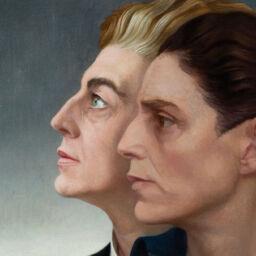

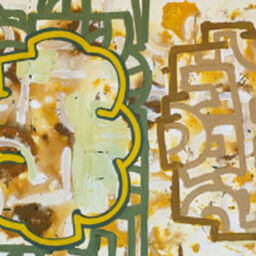

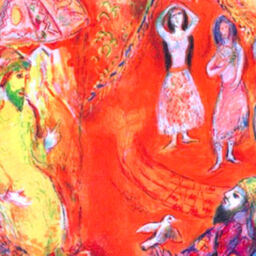
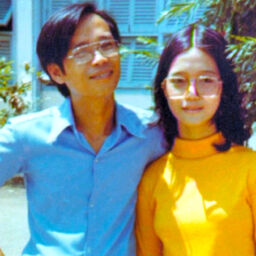






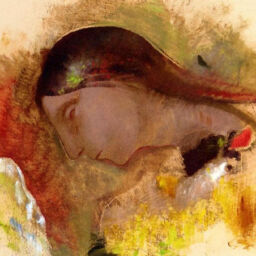
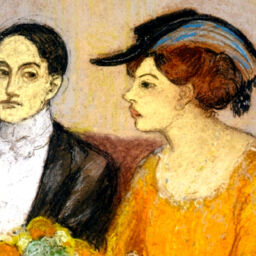
Wow, this is a profoundly helpful case study! As an ENTJ I feel seen just reading it. Thank you for putting words to the need for group validational experience; working on my dissertation right now is proving a challenge to this particular type-need, what with the intense amount of introverting necessary to research and write alone all day.